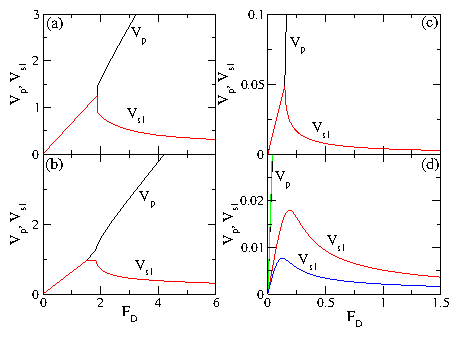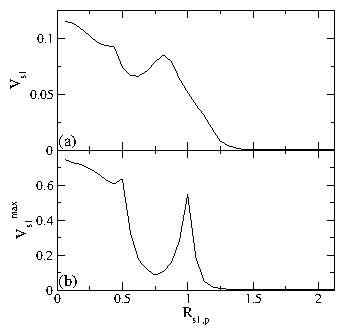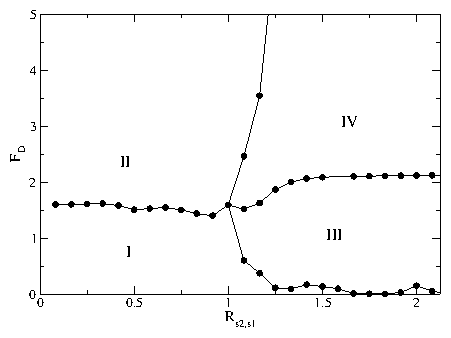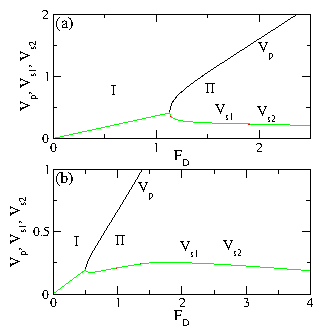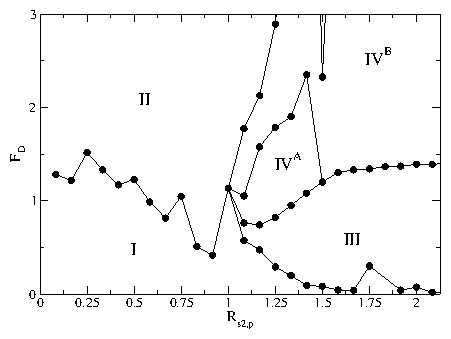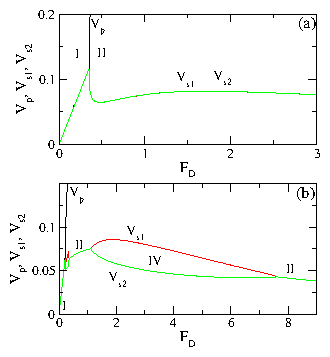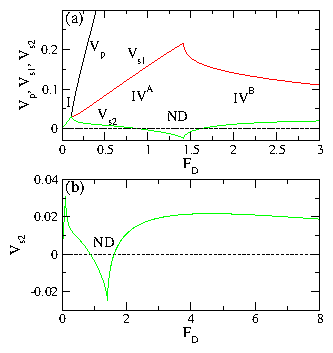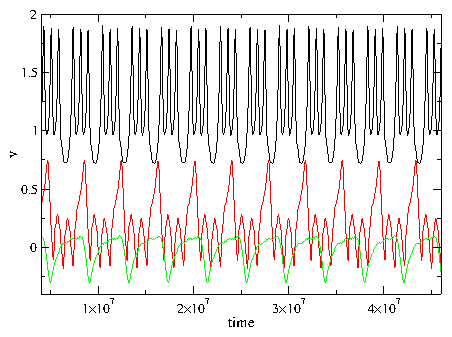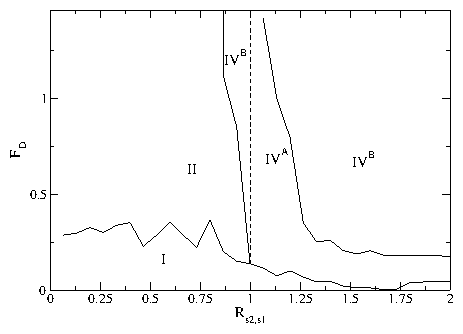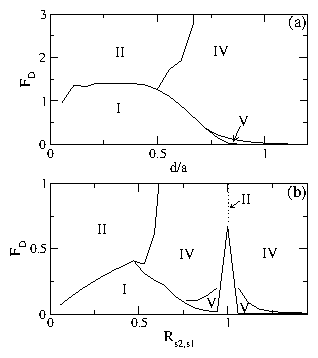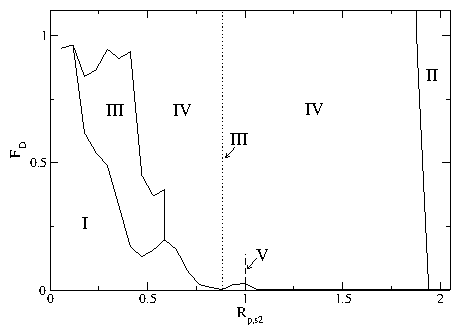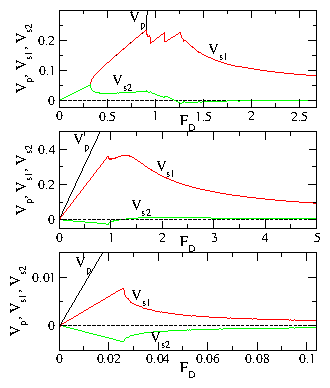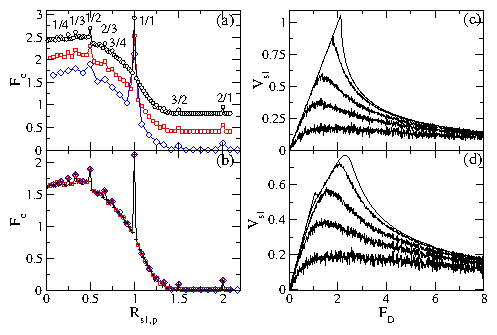 Figure 8:
(a) Fc vs Rs1,p for the system with d/a = 0.67 from
Fig. 5(b) of length L (diamonds), 2L
(squares, curve shifted up by 0.4), and 4L
(circles, curve shifted up by 0.8).
For the larger systems, higher order fractional
peaks appear at Rs1,p = 1/4, 1/3, 1/2, 2/3, 3/4, and 3/2.
(b) The same data plotted without vertical shifts, for system sizes
of L (diamonds), 2L (squares), and 4L (plus signs). Connecting
lines are drawn only for the 4L system. The curves
overlap exactly and the values of Fc are unaffected by system size.
(c,d) Vs1 vs FD for the 4L system from (a) at (c) Rs1,p = 1.0
and (d) Rs1,p = 0.896 for temperatures of
T = 0.0, 0.22, 0.88, 2.0, and 4.5, from top to bottom.
The decoupling transition drops to lower FD with increasing T, while
the drag effects persist up to high temperatures.
Figure 8:
(a) Fc vs Rs1,p for the system with d/a = 0.67 from
Fig. 5(b) of length L (diamonds), 2L
(squares, curve shifted up by 0.4), and 4L
(circles, curve shifted up by 0.8).
For the larger systems, higher order fractional
peaks appear at Rs1,p = 1/4, 1/3, 1/2, 2/3, 3/4, and 3/2.
(b) The same data plotted without vertical shifts, for system sizes
of L (diamonds), 2L (squares), and 4L (plus signs). Connecting
lines are drawn only for the 4L system. The curves
overlap exactly and the values of Fc are unaffected by system size.
(c,d) Vs1 vs FD for the 4L system from (a) at (c) Rs1,p = 1.0
and (d) Rs1,p = 0.896 for temperatures of
T = 0.0, 0.22, 0.88, 2.0, and 4.5, from top to bottom.
The decoupling transition drops to lower FD with increasing T, while
the drag effects persist up to high temperatures.
|


